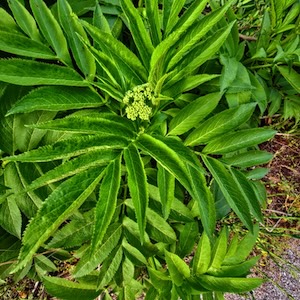Antikyran hellebore in the time of Caligula

Accepted: May 2, 2025
HTML: 127
All claims expressed in this article are solely those of the authors and do not necessarily represent those of their affiliated organizations, or those of the publisher, the editors and the reviewers. Any product that may be evaluated in this article or claim that may be made by its manufacturer is not guaranteed or endorsed by the publisher.
Caligula is the only emperor of Rome whose name is connected both to the plant hellebore and the ancient Greek town of Antikyra. These connections are reported by Suetonius and concern a Roman senator of praetorian rank, who had been granted a leave of absence on account of his poor health. The senator may have been granted the initial leave because he had successfully made a case for his need of the unique qualities of the hellebore treatments at Antikyra. Unfortunately, he had pressed his luck with the notoriously temperamental and cruel Caligula by asking for an extension of his leave one time too many, so the emperor had him executed. It is an intriguing tale, but it is also sadly short on specifics. Due to the scarceness of detailed information in Suetonius’ anecdote, it is necessary to cast about more widely in a multivariate search for additional data to fill out our understanding of these events, Antikyra’s place in Caligula’s empire, and how these things relate to the town’s longstanding fame for unique hellebore treatments. Most notably, this study introduces recent ethnobotanical field data collected around Antikyra and intensive study of the exquisite Anicia Juliana Codex (Vienna Dioscorides) facsimile held by the Yale Medical Historical Library to inject new life into an often-overlooked passage of Suetonius.
How to Cite

This work is licensed under a Creative Commons Attribution-NonCommercial 4.0 International License.
Copyright (c) 2025 The Author(s)
PAGEPress has chosen to apply the Creative Commons Attribution NonCommercial 4.0 International License (CC BY-NC 4.0) to all manuscripts to be published.

 https://doi.org/10.4081/peasa.56
https://doi.org/10.4081/peasa.56



